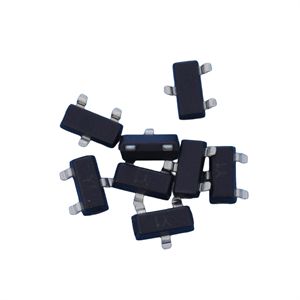Date:2024-09-30 Categories:Product knowledge Hits:368 From: Guangdong Youfeng Microelectronics Co., Ltd(YFW)
First, connect the multimeter to the test diode terminal, use the red probe of the multimeter to contact one of the pins of the transistor, and use the other probe of the multimeter to test the remaining pins until the following result is obtained:
1、 If the black probe of a transistor is connected to one of its pins, and the red probe is used to measure the conductivity of the other two pins with a voltage display, then this transistor is a PNP transistor, and the pin connected to the black probe is the base B of the transistor. Use the above method
When testing, if the red probe of the multimeter is connected to one of the pins with a slightly higher voltage, then this pin is the emitter E of the transistor, and the remaining pin with a lower voltage is the collector C.
2、 If the red probe of a transistor is connected to one of its pins, and the other two pins are both conducting with a voltage display when measured with a black probe, then this transistor is an NPN transistor, and the pin connected to the red probe is the base B of the transistor. Use the above method
When testing, if the black probe of the multimeter is connected to one of the pins with a slightly higher voltage, then this pin is the emitter E of the transistor, and the remaining pin with a lower voltage is the collector C.
Another method is to use HFE gear for judgment. After determining the base and transistor type of the transistor, insert the base of the transistor into the Lu value measurement hole according to the position of the base and the transistor type, and insert the other two pins into the remaining three
Measure any two holes, observe the size of the data on the display screen, find the collector and emitter of the transistor, exchange positions, and then measure again. Observe the value on the display screen, repeat the measurement four times, and compare and observe. Based on the measured number
The maximum value is the current amplification factor of the transistor, which corresponds to the collector and emitter electrodes of the transistor.
The discrimination of transistor type and pins is a basic skill for beginners in electronic technology. In order to help readers quickly master the measurement and judgment methods, the author summarizes four mnemonics: "Reverse three, find the base; PN junction, determine the transistor type; Following the arrow, there is a large deviation; I'm not sure, move your mouth Let's explain sentence by sentence below.

Previous: Classification, Structure, and Principle of MOSFET
Next: Using voltage inspection method to quickly locate fault points in integrated circuits